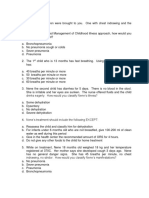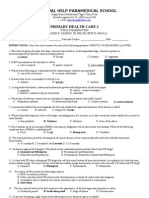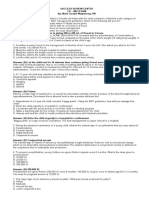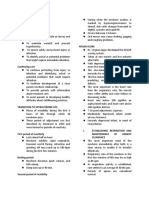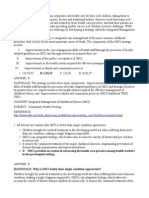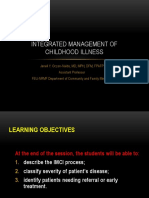100% found this document useful (1 vote)
2K views2 pagesImci Exam
The document discusses the Integrated Management of Childhood Illness (IMCI) strategy which aims to reduce child deaths and promote growth and development. IMCI guidelines target children under 5 years old, the age group with the highest burden of deaths from common childhood illnesses. The guidelines are based on using a limited number of carefully selected clinical signs with evidence of detecting disease sensitivity and specificity. A combination of individual signs leads to a child's classification rather than diagnosis, with classifications indicating severity of condition. "Green" classification suggests no treatment is needed. The assessment procedure includes history taking, checking for general danger signs and main symptoms except nutritional status of caretaker.
Uploaded by
John Michael ClimacoCopyright
© © All Rights Reserved
We take content rights seriously. If you suspect this is your content, claim it here.
Available Formats
Download as DOCX, PDF, TXT or read online on Scribd
100% found this document useful (1 vote)
2K views2 pagesImci Exam
The document discusses the Integrated Management of Childhood Illness (IMCI) strategy which aims to reduce child deaths and promote growth and development. IMCI guidelines target children under 5 years old, the age group with the highest burden of deaths from common childhood illnesses. The guidelines are based on using a limited number of carefully selected clinical signs with evidence of detecting disease sensitivity and specificity. A combination of individual signs leads to a child's classification rather than diagnosis, with classifications indicating severity of condition. "Green" classification suggests no treatment is needed. The assessment procedure includes history taking, checking for general danger signs and main symptoms except nutritional status of caretaker.
Uploaded by
John Michael ClimacoCopyright
© © All Rights Reserved
We take content rights seriously. If you suspect this is your content, claim it here.
Available Formats
Download as DOCX, PDF, TXT or read online on Scribd
/ 2









